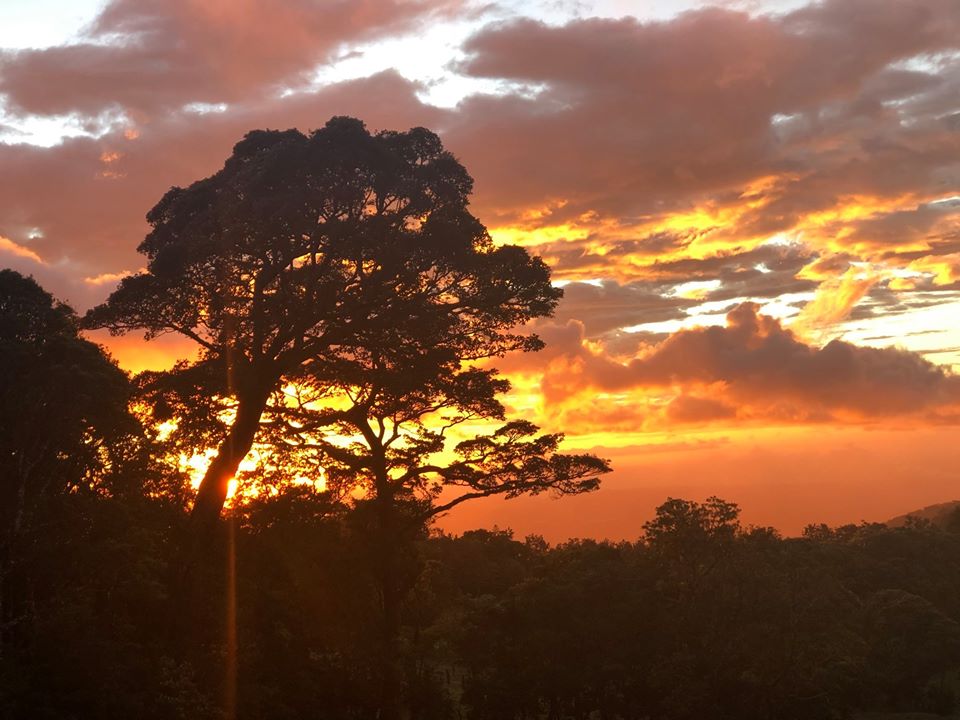Safari Club makes learning international

March 9, 2020
By Nicole Wright and Mary Crawford, NCTA News
CURTIS, Neb. – The Safari Club of the Nebraska College of Technical Agriculture traveled to Costa Rica during NCTA’s Winter Break in January.
Six students in the Veterinary Technology Division, home to the NCTA Safari Club, presented class reports before a campus audience in February.
Ten faculty, alumni and friends joined the six students for the adventure, explained Judy Bowmaster Cole, Veterinary Technology instructor and Safari Club sponsor.
The group traveled to six of Costa Rica’s seven provinces. The country harbors close to five percent of the world’s biodiversity, the students reported.
Second-year Veterinary Technology student Kaylee Springer of Craig, Colorado, said it was a fascinating journey. She served as the Safari Club president for the past year.
“A highlight for me was getting to experience a culture that I previously have never been exposed to, and being welcomed in the communities, said Keegan Jones, a second-year Vet Tech student from Laurel, Maryland.
Costa Rica travelogue:
Day #1 – Travel to the first provinces, through the beautiful rainforest and became acclimated to Costa Rica.
Day #2 – Traveled further into the rainforest where they were able to see various unique plants. Met with bamboo artisan Brian Erickson who demonstrated how he crafts growing bamboo into houses and furniture.
Day #3 - The group went into Bri Bri village to learn more about the Cahuita indigenous people. Villagers Ana and Luis explained traditions and culture, including use of herbal medicine. Several students said they “stepped out of their comfort zone” and tried many of the tribe’s traditional remedies, which can be compared to many modern medicines. One remedy, they learned, was that the use of bark from the so-called “tourist tree” has been patented by Bayer company.
Later on Day #3, they went to a Sloth Sanctuary and Rescue Center. Here they learned about sloths are referred to as the “perezoso” or “lazy bear.”
“My favorite part of the trip was that third day,” said Springer. “We got to see how the indigenous peoples’ culture works, and how different it was from our culture.”
Day #4 – Featured the North Atlantic side of the country where they met with Dr. Cat, a veterinarian who travels alone and treats small animals in that area. At Frog Heaven they ventured out to learn about various reptiles and amphibians.
Day #5 - Visited Puerto Viejo de Sarapiqui, where they took a river ride and saw much of the country’s biodiversity. Further travel prepared them for their evening destination.
Day #6 – A stop near the base of Arenal Volcano informed them of Costa Rica’s most active volcano in a 43-year period. Here they spent leisure time at Lake Arenal, the largest landlocked body of water in Costa Rica. The lake had been formed by an electrical energy dam and is now a hot spot for tourism and water sports. The group ended Day #6 at Arenal Hot Springs, which are geothermally heated and purportedly soothe muscles, help skin issues and nasal congestion, improve circulation, and relieve stress.
Day #7 – Cloud Forest Reserve houses thousands of types of insects and over 2,500 plant species. Some group members enjoyed zip-lining, and a few bungee jumped. They learned the Children’s Eternal Forest houses 2% of the world’s orchids and 3% of the world’s butterflies. A night walk through the rainforest capped their day.
Day #8 - They traveled to Monteverde, a Quaker settlement, where they saw a hydroponic garden, a coffee farm, cattle, the Stuckey Dairy Farm, and met with Dr. Jesus Suerez. He owns a mixed-practice veterinary clinic. He discussed his animal care programs for vaccinations, castrations, surgeries and blood work.
Day #9 - Started at the California Red Worm Fertilizer Farm, which uses cattle manure and worms for fertilizer production. A final tour was to a sanctuary for big cats such as mountain lions, a black panther and a jaguar.
The group ended their stay on a beach by the Pacific Ocean, where they had a farewell dinner, and returned to the U.S. on Day #10.
Looking to 2021
“My highlight of Costa Rica was visiting Bri Bri and getting to see their culture, plus how chocolate is made, zip lining and enjoying the views we got to see that high up,” said Chrissy Starkey, Vet Tech student from Genoa, Nebraska.
She provided many of the photographs from the travel tour. (See in the attached PDF)
The Safari Club is now planning for the next trip in January, 2021, destination to be announced.
Newly-elected officers are President Kenna Graves of Elba, and Treasurer Bailey Johnson of Hastings, who will lead club members in fundraising and planning.
The Safari Club experience, which is now a college-credit class, is important to NCTA, said faculty sponsor Bowmaster-Cole, who has led domestic and international trips for nearly 25 years.
“It is our one opportunity from NCTA for international studies; being able to see another culture and how agriculture in other areas of the world can be similar and also different to our own.”
Editor's note: Nicole Wright is a first-year veterinary technology student and an NCTA Student Senate officer.
Download a PDF of this press release